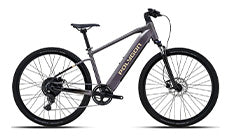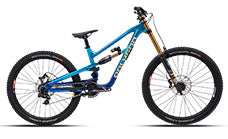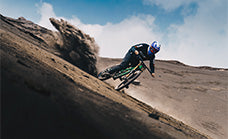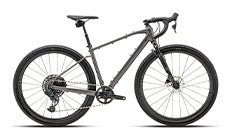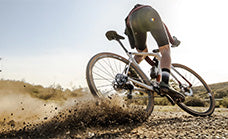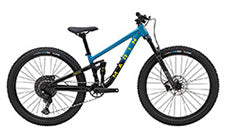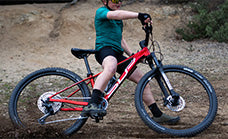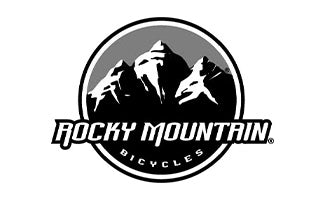How to Pick the Perfect Bike for You

How to Pick the Perfect Bike for You
Choosing your ideal bicycle can feel overwhelming with countless options available in 2025. Whether you're a beginner or returning to cycling after years away, finding the right bike requires understanding your needs, riding style, and how different bike types perform in various conditions. This comprehensive guide will walk you through every consideration to help you select the perfect bicycle that fits your lifestyle, budget, and aspirations. BikesOnline AU specialists have compiled their expertise to simplify this important decision and ensure you ride away with exactly what you need.
Assessing Your Cycling Needs
Determining Your Primary Use
The most crucial first step is honestly assessing how you plan to use your bike. Different riding purposes require distinct features:
Commuting:
If you're riding to work or around town, prioritize comfort, practicality, and reliability. Look for bikes with mounting points for racks and fenders, comfortable geometry for upright riding, and durable components that handle daily use. Many commuters find that hybrid bikes offer the perfect balance of efficiency and comfort for urban environments.
Recreational Riding:
Weekend warriors and casual riders benefit from versatile bikes that handle a variety of terrains. Consider bikes with wider gear ranges for mixed terrain and comfortable seating positions that allow longer rides without fatigue. Suspension systems can add comfort on rough paths or light trails.
Fitness and Exercise:
Riders focused on fitness typically prefer road bikes or performance-oriented hybrids. These bikes emphasize efficiency with lighter frames, narrower tires, and aerodynamic positions. Consider your fitness level and whether you prioritize speed or comfort during workouts.
Off-Road Adventures:
Mountain biking enthusiasts need robust bikes designed for challenging terrain. Key features include suspension systems, wider tires with aggressive tread, and components that withstand impacts. Determine whether you'll ride primarily on trails, technical singletrack, or just rough paths to guide your suspension and geometry choices.
Understanding Your Riding Environment
Your local terrain and climate significantly influence the best bike choice:
Urban Areas:
City riding demands different features than rural cycling. Consider folding bikes for public transit compatibility, puncture-resistant tires for debris-laden streets, and integrated lighting for safety. Theft prevention features become especially important in urban settings.
Suburban Settings:
Mixed environments with roads, paths, and occasional trails suit versatile bikes. Hybrid models excel in suburban areas, offering comfort for longer rides while maintaining efficiency on varied surfaces. Consider suspension for comfort on less-maintained paths.
Rural Landscapes:
Country roads and farm tracks often feature hills, gravel sections, and varied surfaces. Bikes with wider tire clearance, multiple gearing options, and sturdy construction handle these challenges better. Many rural riders appreciate bikes that can handle both paved and unpaved surfaces.
Coastal Regions:
Salt air and sandy conditions require special consideration. Look for corrosion-resistant materials, sealed bearings, and components that resist salt damage. Steel frames with proper protection can outlast aluminum in coastal areas.
Key Bike Types Explained
Road Bikes
Road bikes optimize for speed and efficiency on paved surfaces. Key characteristics include:
- Drop handlebars for aerodynamic positioning
- Narrow tires (23-32mm) for reduced rolling resistance
- Lightweight frames designed for climbing and acceleration
- Many gears for maintaining ideal cadence
Modern road bikes divide into several subcategories:
- Endurance road bikes prioritize comfort for longer rides
- Race bikes focus on aerodynamics and stiffness
- Gravel bikes expand road bike capability to rough surfaces
- Electric road bikes add assistance for hills and longer distances
BikesOnline road bike experts note that beginners often benefit from endurance-oriented models that balance performance with comfort.
Mountain Bikes
Mountain bikes tackle off-road terrain with specialized features:
- Front Suspension (Hardtail): Shock absorber in front fork only
- Full Suspension: Front and rear shock absorbers for maximum comfort
- Rigid: No suspension, often seen in specific disciplines
Key considerations include:
- Wheel size (26", 27.5", or 29") affects handling and rolling ability
- Travel amount (suspension movement) determines terrain capability
- Component quality impacts reliability on challenging trails
- Tire width and tread pattern influence traction and control
Hybrid Bikes
Hybrid bikes combine road bike efficiency with mountain bike versatility:
- Upright riding position for visibility and comfort
- Medium-width tires handle various surfaces
- Flat handlebars provide control and accessibility
- Often include mounting points for accessories
These bikes excel for commuting, errands, and recreational riding on mixed surfaces. They're particularly popular among BikesOnline customers seeking one bike for multiple purposes.
Electric Bikes (eBikes)
Electric bikes add motor assistance to traditional designs:
- Pedal-Assist: Motor provides power as you pedal
- Throttle-Controlled: Motor operates independently of pedaling
- Different Classes: eBikes are often categorized into classes based on their maximum assisted speed and whether they have a throttle. For instance, a Class 1 eBike might offer pedal assist up to 20 mph (32 km/h) and no throttle, while a Class 2 could have a throttle and reach 20 mph (32 km/h), and a Class 3 could provide pedal assist up to 28 mph (45 km/h).


